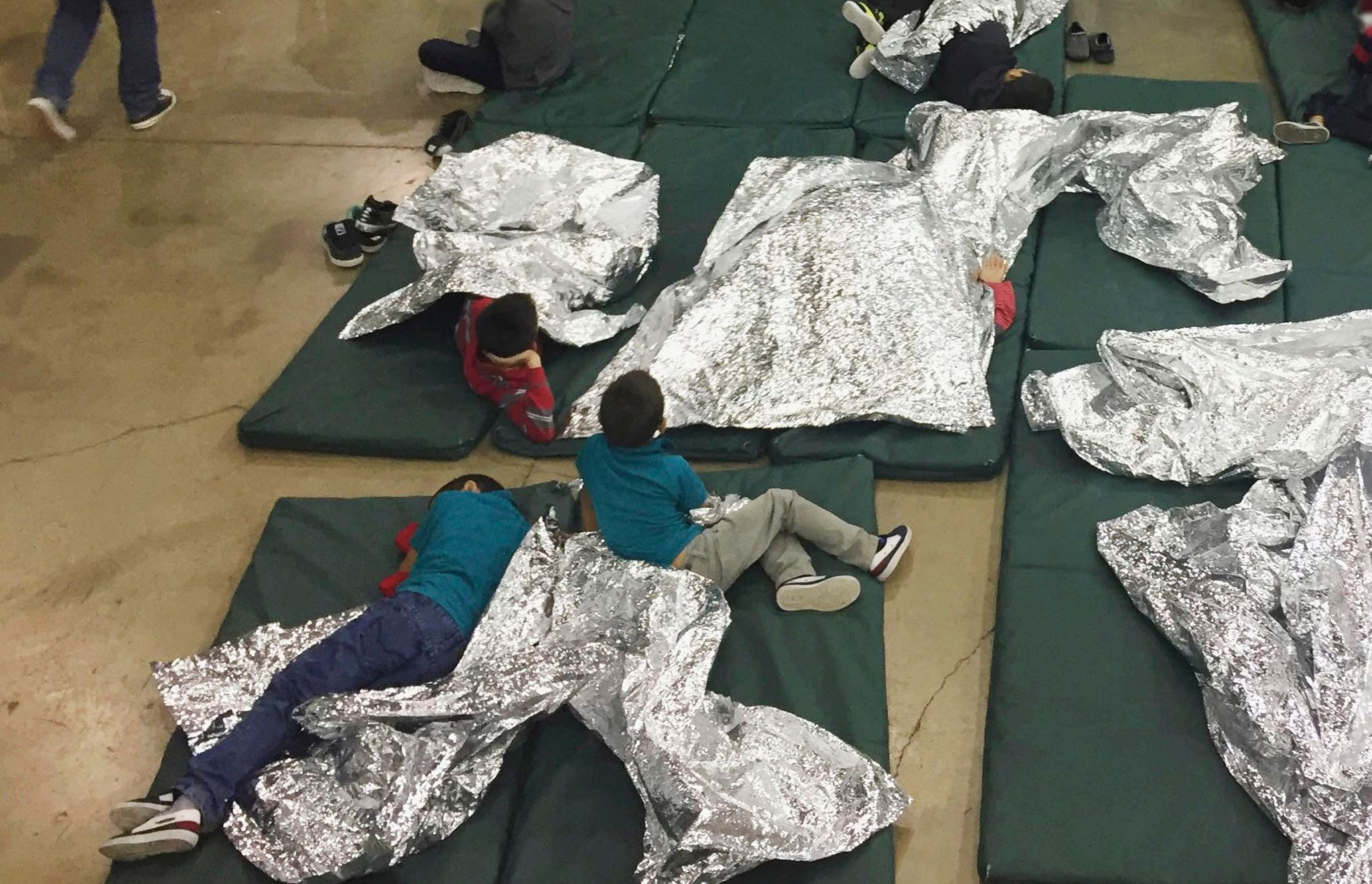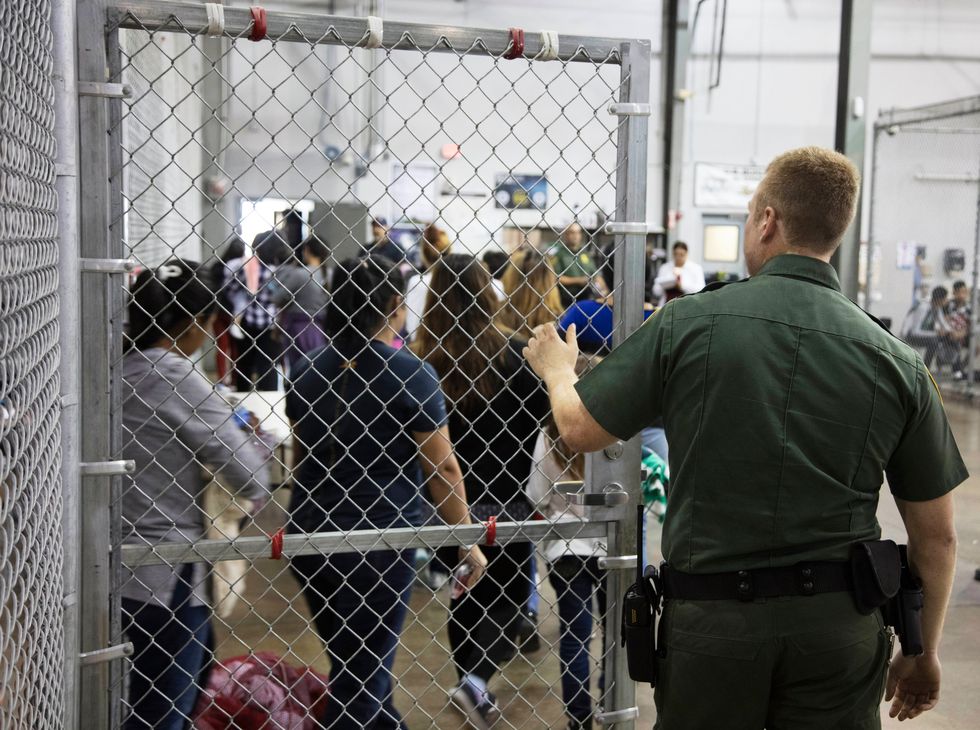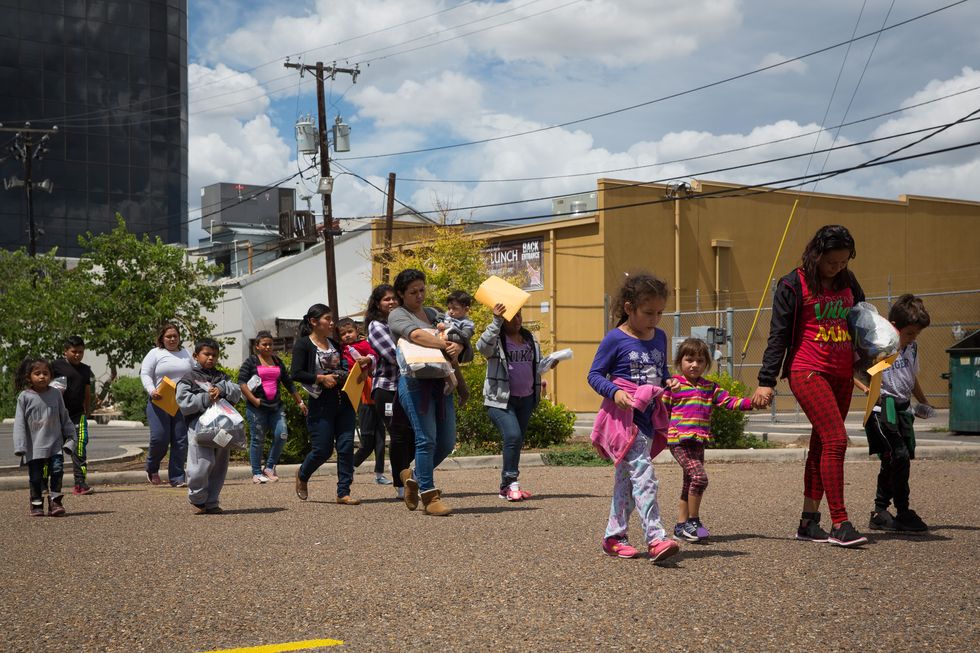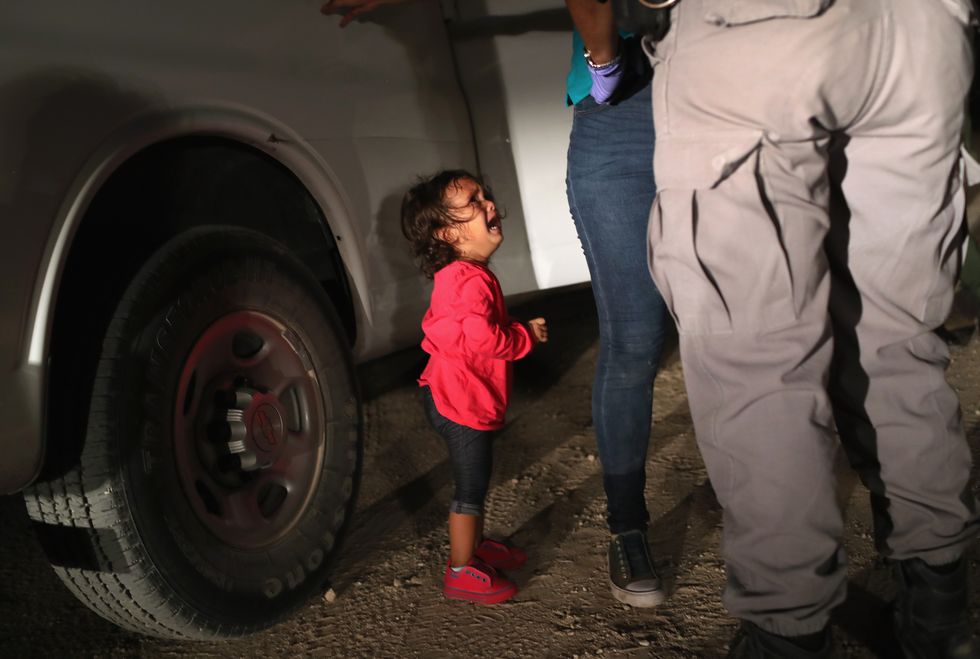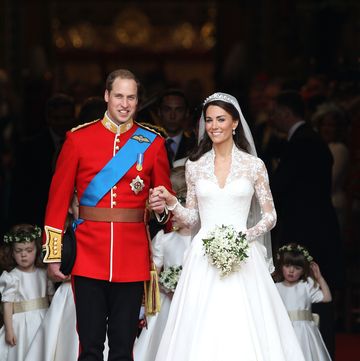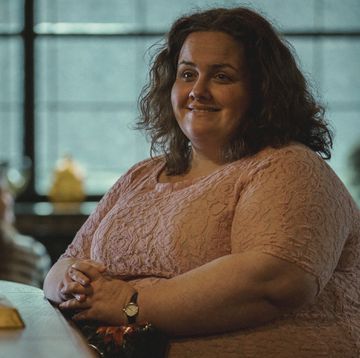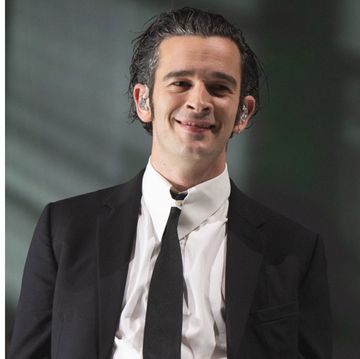> Around 2,000 children were separated from their parents at the United States' southern border between April 19 and May 31 as a result of the Trump administration's "zero tolerance" policy. > Migrants (including asylum seekers) are being charged with a felony misdemeanor, and while they await trial, children are being placed in shelters with cage-like dividers, all without information about where their parents are and when they'll see them next. > If you're looking to help, you can donate to several organizations, join protests, and call your elected officials.
Though children have been separated from their parents at the United States’ southern border for months as a result of the Trump administration's "zero tolerance" immigration policy, stories are just now coming out detailing what the families have been going through. In recent days, reporters, lawyers and former detention center employees describe shelters set up like cages and kids awaiting any information at all about where their parents are—and suffering extreme emotional distress as a result.
Officials confirmed 1,995 children were separated from their parents between April 19 and May 31, and that number is only growing as the U.S. government enforces a “zero tolerance policy,” charging nearly every adult who crosses the border illegally with a federal misdemeanor. That means adults are entered into the criminal justice system, and are sent to detention centers to await charges. Their children are turned over to Health and Human Services, which places them in shelters.
Some of these shelters are converted from Walmart stores, where kids are divided into spaces via chain link fences, making the rooms resemble cages. NBC News reported that kids lay on mattresses on concrete floors, covered in the mylar blankets often used to warm up marathon runners post-race. Here are just some of the horrifying stories coming from the border right now.
1. “Tell Them They Can’t Hug.”
Antar Davidson, who quit his position as a youth care worker at a shelter in Arizona this week, told the Los Angeles Times his coworkers told him to pass on a message to three Brazilian children: “Tell them they can’t hug.” The children were told their parents were “lost,” and they thought that meant dead, so they were “huddled together, tears streaming down their faces,” Davidson said.
2. Self-Harm and Suicide Attempts
Davidson also told the Los Angeles Times some children at the shelter were screaming, throwing furniture, running away, and even attempting suicide. Records reportedly showed several children were being monitored for being at risk of self-harm. Davidson recounted one story when a child said he was going to the U.S. to live with his father, but a DNA test revealed the man wasn’t his biological child and thus “didn’t want anything to do with him.” The biological father “didn’t want him either,” and the boy started scratching himself and attempted to kill himself.
3. Taken for a Bath—and Then Forcibly Separated
According to the LA Times the Texas Civil Rights Project and public defenders have recalled several cases of parents who say they were told their kids were going to get a bath at a processing center, only to never be reunited with their parents. Homeland Security officials deny withholding information from parents, and say they hand out fliers in English and Spanish explaining the separation process to them.
4. A Father Who Took His Own Life
The Washington Post reports that on May 13, Marco Antonio Muñoz died by apparent suicide in a Texas jail. He had been separated from his wife and child after migrating from Honduras. An anonymous Border Patrol agent told the newspaper Muñoz suffered a mental breakdown after being separated from his family, becoming visibly agitated. After his death, his wife and son were released from Border Patrol custody, but it's unclear where they are now.
5. Kids Teaching Other Kids to Change Diapers
Michelle Brane, director of migrant rights at the Women’s Refugee Commission, told The Associated Press she met a 16-year-old girl at the Ursula facility in South Texas who had to teach other kids to change a young girl’s diaper; the teen had been taking care of the little girl, for three days. After a lawyer spoke up, the girl was reunited with her aunt. "She was so traumatized that she wasn't talking," Brane said. "She was just curled up in a little ball."
6. No Toys, No Books, and No Touching
Brane also told The Associated Press she saw officials shush a group of 5-year-olds for playing in their cage, even though they didn’t have books or toys to distract them. But one boy in the group was separate from the group, quietly holding a photocopy of his mother’s ID card. And Dr. Colleen Kraft, who runs the American Academy of Pediatrics, said when she visited a separate shelter, she saw a kid crying and pounding her fists on a mat. Staffers gave her books and toys then, but they weren’t allowed to touch her to give her any comfort. It turns out that’s a rule there—adults can’t touch the children, no matter how much they might need a hug.
What You Can Do to Help
If you want to do something to make a difference at the border, there are a few ways to do so. You can donate to organizations that are advocating on behalf of migrant parents separated from their children, like RAICES and Border Angels. You can also contact your elected officials to push them to change the system. Finally, you can get out and protest; Families Belong Together has assembled a list of demonstrations across the country.
